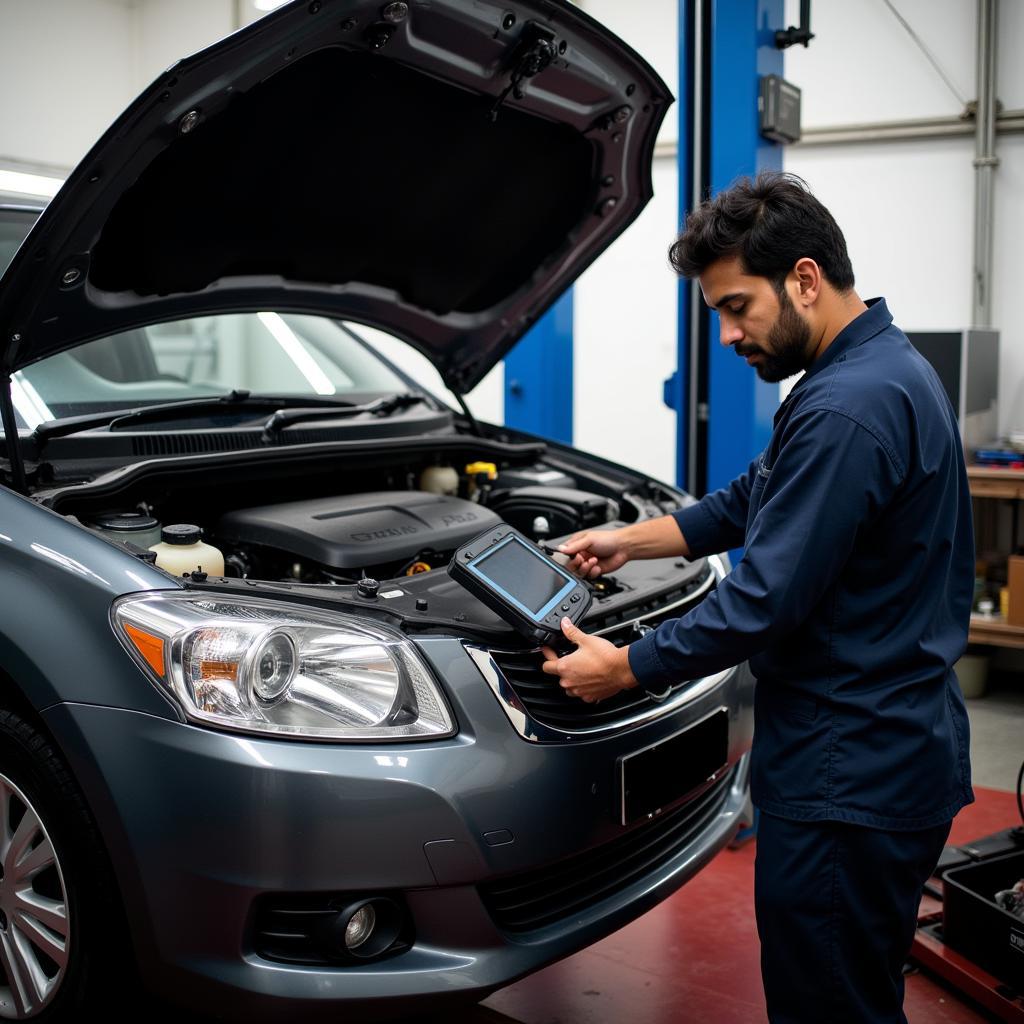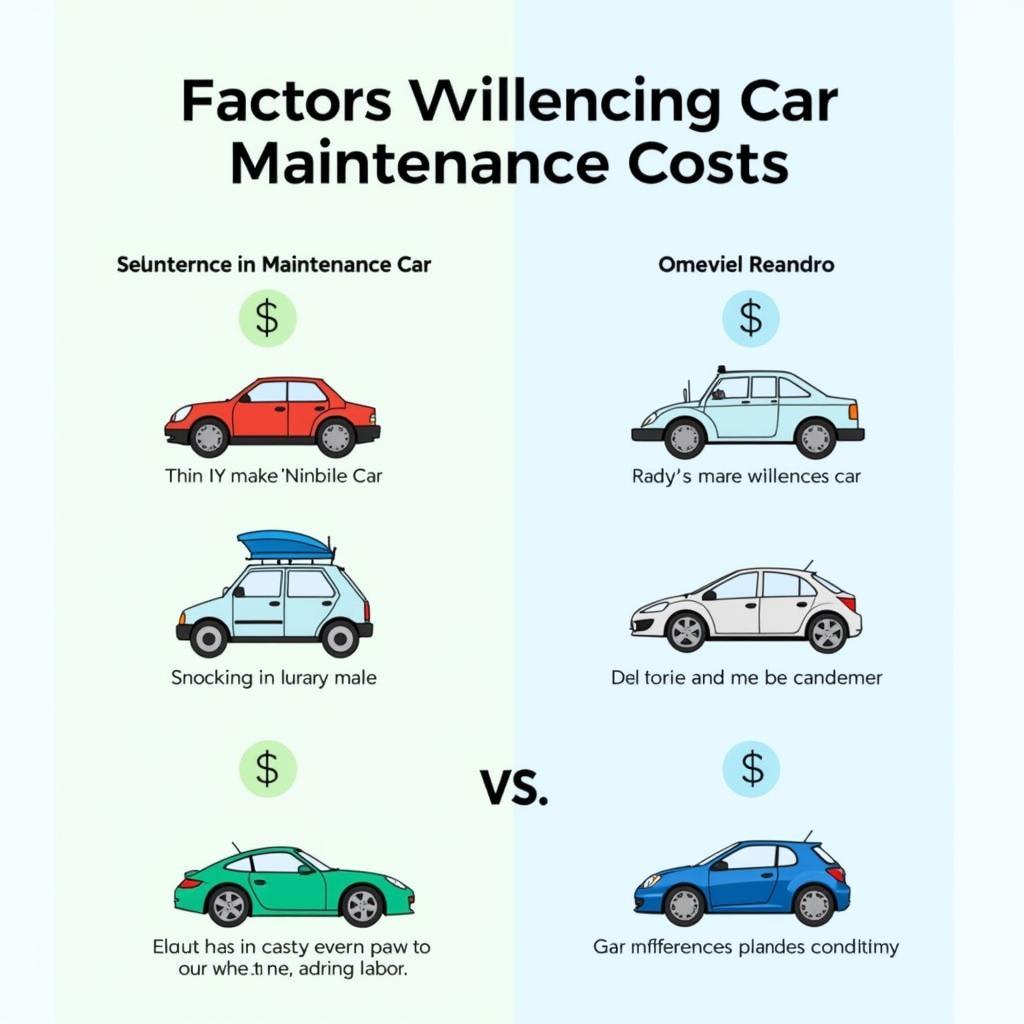Fixing scratches on your car can seem daunting, but with the right knowledge and tools, it’s often a manageable DIY project. This guide will walk you through everything you need to know to fix scratches on your car, from minor clear coat scuffs to deeper paint damage.
Identifying the Scratch: Know Your Enemy
Before you start fixing scratches on your car, it’s crucial to understand the extent of the damage. A simple wash and dry will reveal the true nature of the scratch. Is it a light surface scratch, a scratch that penetrates the paint, or a deep gouge that reaches the primer or even the metal? This assessment will determine the appropriate repair method.
Light Clear Coat Scratches: A Quick Fix
These are the most common type of car scratches and often appear as light, swirling marks. They haven’t penetrated the paint layer and are usually easily addressed with a rubbing compound.
Paint Scratches: Requires More Effort
If the scratch is white or reveals a different color underneath, it has penetrated the paint. These require more than just a rubbing compound and might involve touch-up paint and clear coat.
Deep Scratches: Professional Help May Be Needed
Deep scratches that expose the primer or metal require professional attention to prevent rust and ensure a proper repair. These often involve sanding, priming, and repainting the affected area.
DIY Fix Scratches on Car: Step-by-Step Guide
For minor scratches that haven’t penetrated the paint, here’s a DIY approach:
- Wash and Dry: Thoroughly clean the area around the scratch to remove any dirt or debris.
- Rubbing Compound: Apply a small amount of rubbing compound to a microfiber cloth.
- Gentle Rubbing: Rub the compound onto the scratch using circular motions, applying gentle pressure.
- Check and Repeat: Wipe away the compound and check the scratch. Repeat the process if necessary.
- Polish: After the scratch is removed, polish the area to restore shine.
Fixing Deeper Paint Scratches
For scratches that penetrate the paint, you’ll need touch-up paint:
- Clean the Area: Clean the scratched area thoroughly.
- Apply Touch-Up Paint: Carefully apply the touch-up paint to the scratch, ensuring it fills the entire scratch without overflowing.
- Level the Paint: Use a fine-grit sandpaper or a rubbing compound to level the touch-up paint with the surrounding paint.
- Apply Clear Coat: Apply a thin layer of clear coat over the touched-up area.
- Polish: Polish the area to blend the repair and restore shine.
“When fixing scratches, patience is key. Take your time and follow the steps carefully to achieve the best results,” advises John Miller, an automotive paint specialist with 20 years of experience.
Preventing Future Scratches
Preventing scratches is always better than fixing them. Here are a few tips:
- Regular Washing: Regularly washing your car removes abrasive dirt and grime.
- Waxing: Applying wax provides a protective layer against minor scratches.
- Covered Parking: Parking in a garage or under a carport reduces exposure to the elements and potential scratches.
- Careful Parking: Avoid parking in tight spaces or areas with high traffic.
How can I fix a scratch on my car at home?
For minor scratches, washing the car, then using a rubbing compound and polishing is usually enough. Deeper scratches might require touch-up paint and clear coat.
What is the best way to remove scratches from car paint?
The best method depends on the depth of the scratch. Light scratches can be removed with rubbing compound. Deeper scratches need touch-up paint and clear coat.
Conclusion: Fix Scratches on Car With Confidence
Fixing scratches on your car doesn’t have to be a major headache. By understanding the type of scratch and following the appropriate steps, you can often achieve professional-looking results. For expert assistance or if you’re unsure about tackling the repair yourself, feel free to contact AutoTipPro at +1 (641) 206-8880 or visit our office at 500 N St Mary’s St, San Antonio, TX 78205, United States.
FAQ
- Can I use toothpaste to fix scratches on my car? While toothpaste can sometimes mask very minor scratches, it’s not a permanent solution and isn’t recommended for anything beyond superficial blemishes.
- What is the difference between rubbing compound and polishing compound? Rubbing compound is more abrasive and used for removing scratches, while polishing compound is finer and used to restore shine.
- How much does it cost to professionally fix scratches on a car? The cost varies depending on the severity and number of scratches. Minor scratches might cost a few hundred dollars, while more extensive damage can cost significantly more.
- Can I fix a scratch on my car without repainting? Yes, minor scratches and even some deeper scratches can be fixed without repainting using rubbing compound, touch-up paint, and clear coat.
- How can I prevent scratches on my car? Regular washing, waxing, covered parking, and careful parking can all help prevent scratches.
- What if the scratch is on a plastic bumper? Plastic bumpers require slightly different techniques. Specific plastic repair kits are available for these types of scratches.
- When should I seek professional help for car scratches? If the scratch is deep, exposes the primer or metal, or if you’re uncomfortable attempting the repair yourself, it’s best to consult a professional.
“Remember, a well-maintained car not only looks good but also retains its value. Addressing scratches promptly can prevent further damage and maintain your car’s appearance,” says Maria Sanchez, a seasoned automotive detailer.






Leave a Reply